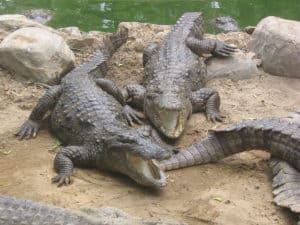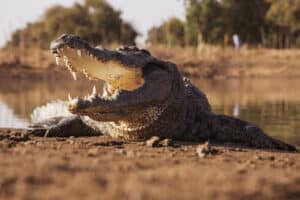Continue reading for our analysis...
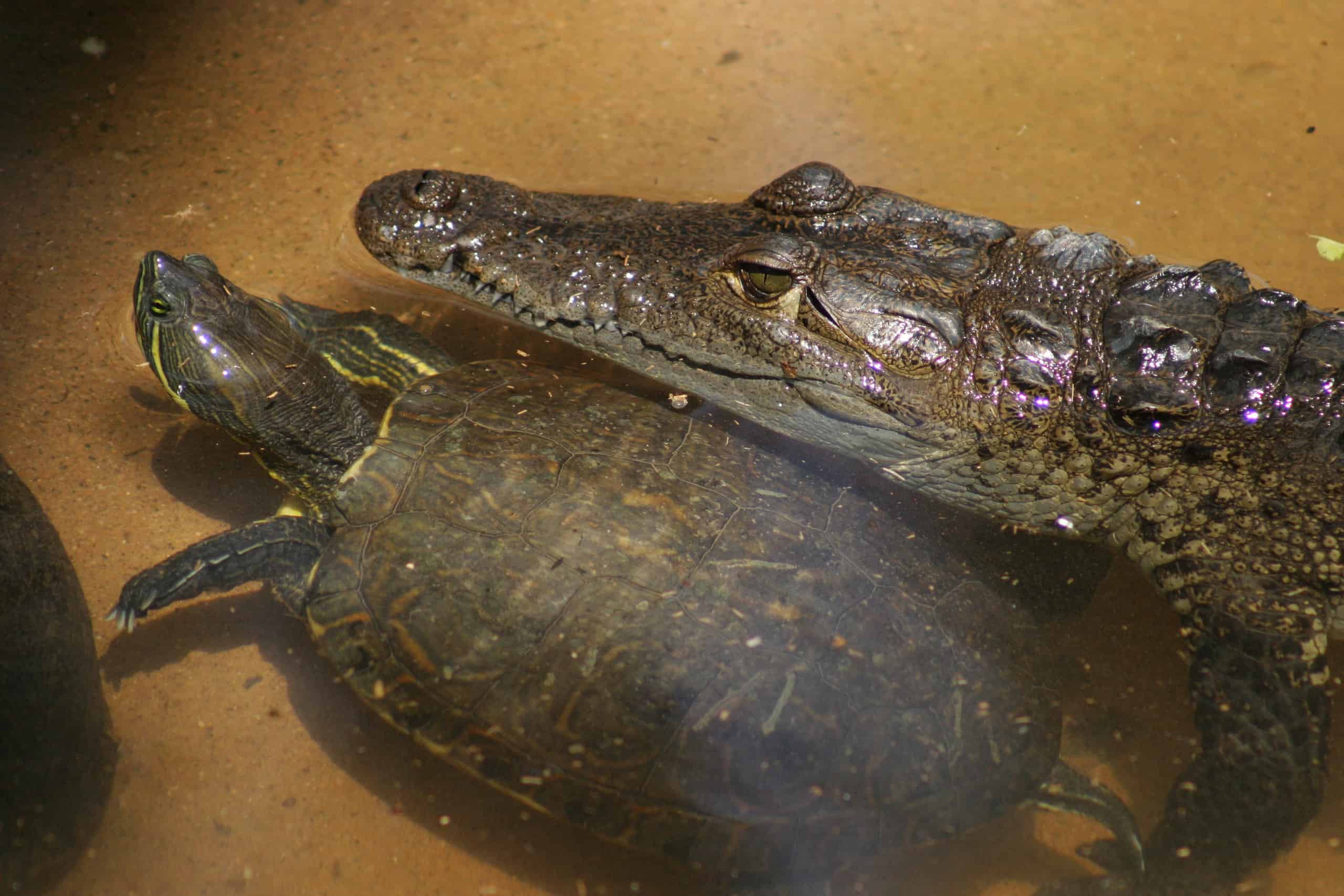
First and foremost, the video attached is not for the faint of heart. If you’re squeamish, consider just reading this article, as the video gets a bit graphic. It all starts with a small crocodile roaming through the woods. With their green and brown exterior, crocs tend to blend in when walking in forestry.
Unfortunately for this crocodile, there were two men hunting for a tasty meal. As soon as they spotted the apex predator, it took them no time at all to take it down with a forked stick and pure manpower.
The Australian freshwater crocodile is among the fastest species of crocodile in the world, with a top speed of roughly 10.56 mph. Humans would undoubtedly triumph if a race were held between them and crocodiles since the latter cannot outpace humans because they lack the energy and endurance required to run on land. In the water, however, crocodiles are speed demons!
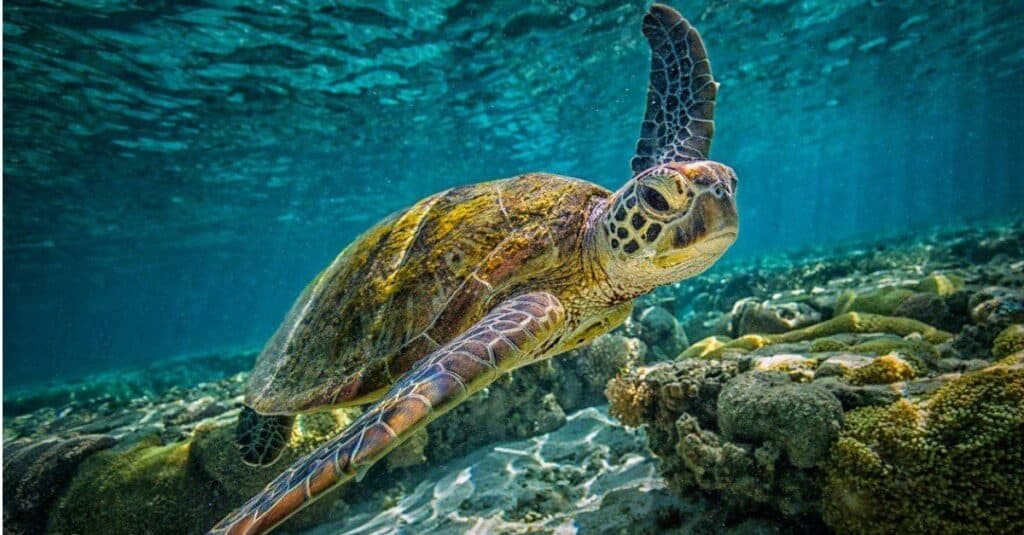
Turtles are not the preferred food for crocs although they can eat just about anything they want!
©iStock.com/Greg Sullavan
The footage of the two hunters gutting the crocodile shows something surprising. As they reach inside, they find not one, but three little turtles! And they’re still alive! Equivalent environments are shared by similarly ancient animals like turtles and crocodiles. Their preferred meal isn’t turtles, though.
Is It Normal Behavior for Crocodiles to Eat Turtles?
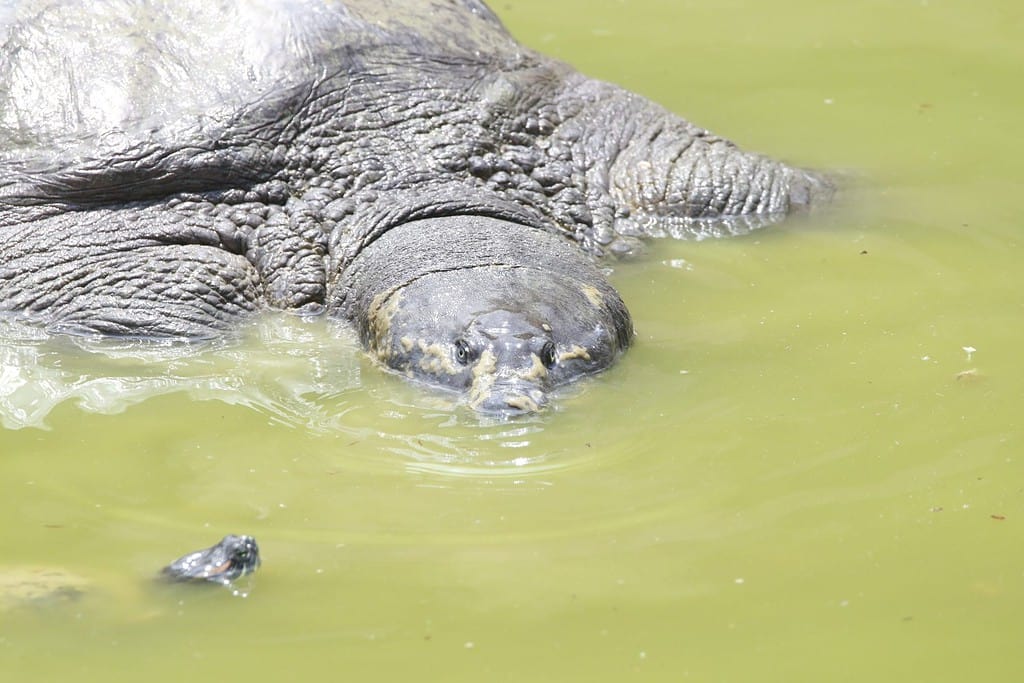
Crocodiles will eat turtles if given the chance.
©Paulose NK/Shutterstock.com
Saltwater crocodiles eat different kinds of animals. They are opportunistic eaters. So they will eat things like crabs, fish, birds, turtles, pigs, buffalo, and even humans. When sea turtles grow up, they become stronger and less likely to be attacked by predators. But in some places like estuaries and coastal areas, crocodiles and alligators can still pose a threat to adult sea turtles.
Crushing Facts
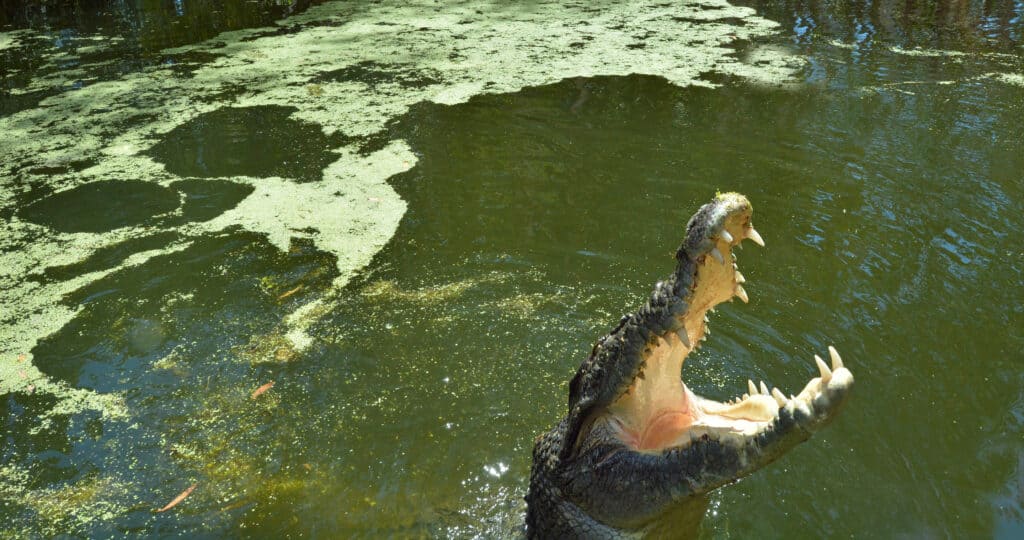
Crocodile jaws can exert 3700 pounds per square inch
©ChameleonsEye/Shutterstock.com
Here are some amazing facts:
- Dinosaurs and crocodiles share a common ancestry as part of the same crown group.
- The phrase “crocodile tears” originated from the behavior of crocodiles.
- Crocodiles possess the most powerful bite known to exist on Earth.
- Hatchling crocodiles are capable of making sounds even while inside their eggshells.
- Saltwater crocodiles claim the title of both the largest crocodile species and the largest living reptile globally.
A larger saltwater crocodile’s bone-crunching jaw can exert a force of 3700 psi, which is more than sufficient to crack through a turtle’s shell despite its robust shell. Turtles can sustain 200 times their own weight in pressure or more than 1000 psi.
Even so, it won’t be strong enough to withstand a crocodile’s vicious bite. These facts, and one glance at the comments, make us wonder if the hunters put the turtles in the croc beforehand for shock factor. The video does have nearly 80 million views, and it’s easy to see why.
A Tasty Recipe
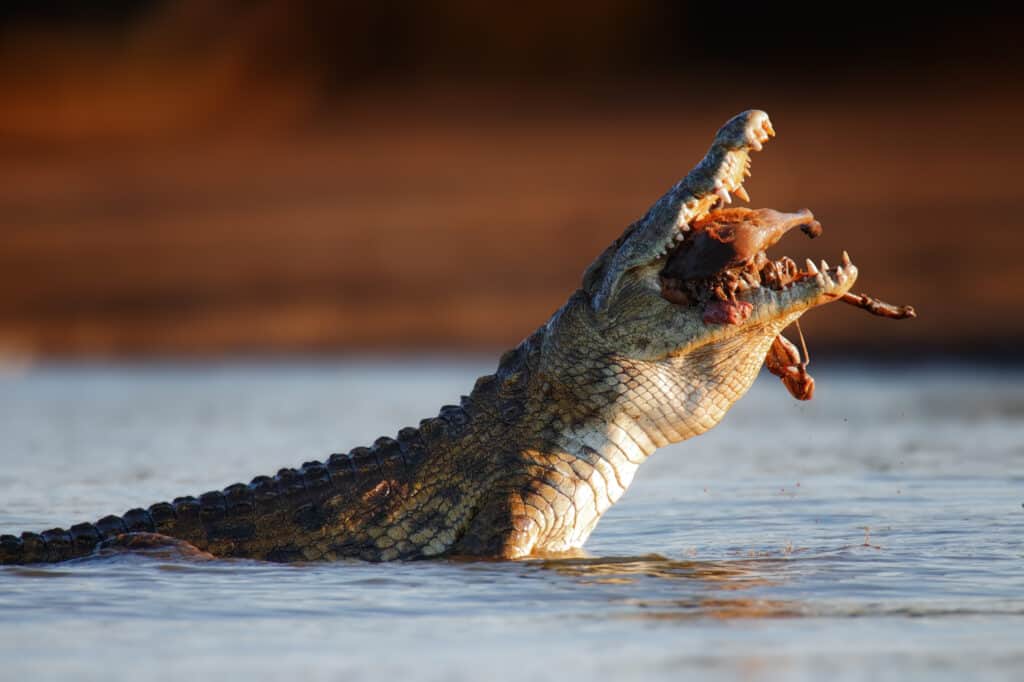
Sometimes crocodiles catch small mammals, but that isn’t their most common meal
©Mari Swanepoel/Shutterstock.com
After gutting the juvenile animal, they place it on a campfire to cook. Once that’s complete, the hunters chop up the meat and add a plethora of fresh vegetables and spices to create a unique dish.
The tenderloin, ribs, body, jaw, and tail are the most popular slices of crocodile meat, though all of it can be consumed. Due to the lack of bones, most individuals like eating body meat. Some people like the premium slices taken from the animal’s top tail.
With its robust and tender consistency of luscious white meat and mild flavor, crocodile meat has been compared to a leaner form of pork by some. Although the crocodile may taste a little fishy depending on where it was caught, the meat flakes apart quickly but not as easily as fish.
Have you tried crocodile? If not, is it something you’re willing to taste? Let us know! Don’t forget to check out the myriad of crikey croc content we have below!
Is it Normal for Crocodiles to Eat Turtles?
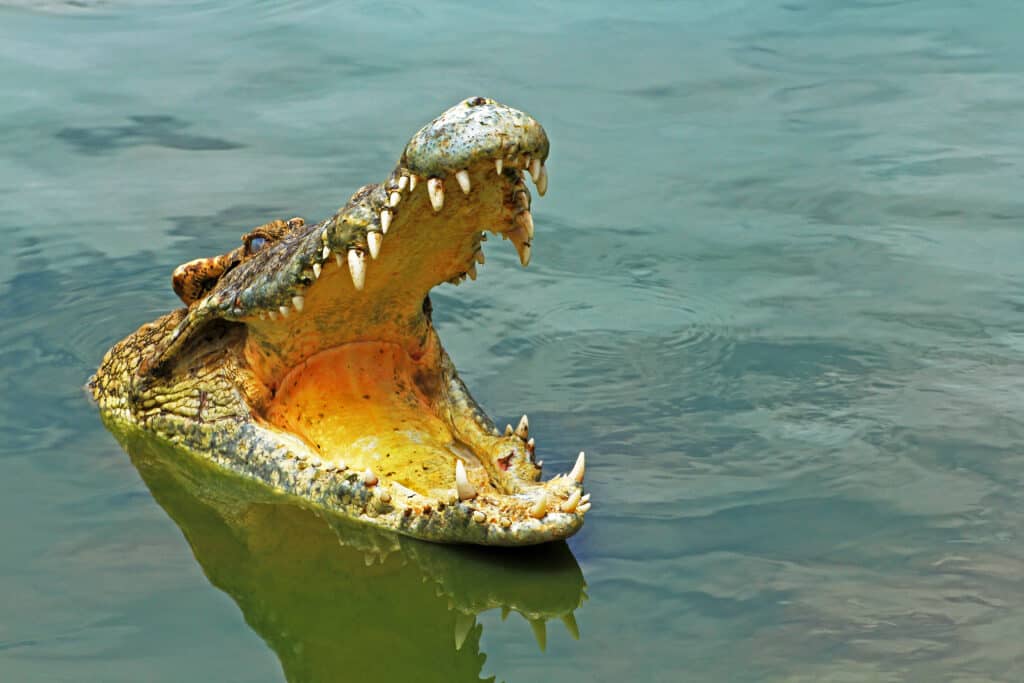
Crocodiles’ favorite foods are insects, fish, lizards, and small frogs.
©Somluck Rungaree/Shutterstock.com
Turtles aren’t speedy and are not the greatest fighters, so they have to rely on their protective shell to keep them alive. And it works pretty well! Not many predators can bite through a turtle’s hard outer shell. One animal that does have a strong enough jaw to break a turtle’s built-in helmet is the crocodile. Turtles are not their number-one choice for dinner, though. Crocodiles would much rather take a less crunchy dinner, like insects, fish, small frogs, and lizards. Often when crocodiles try to catch turtles, the turtle escapes anyway due to the shape of its shell.
Thank you for reading! Have some feedback for us? Contact the AZ Animals editorial team.



